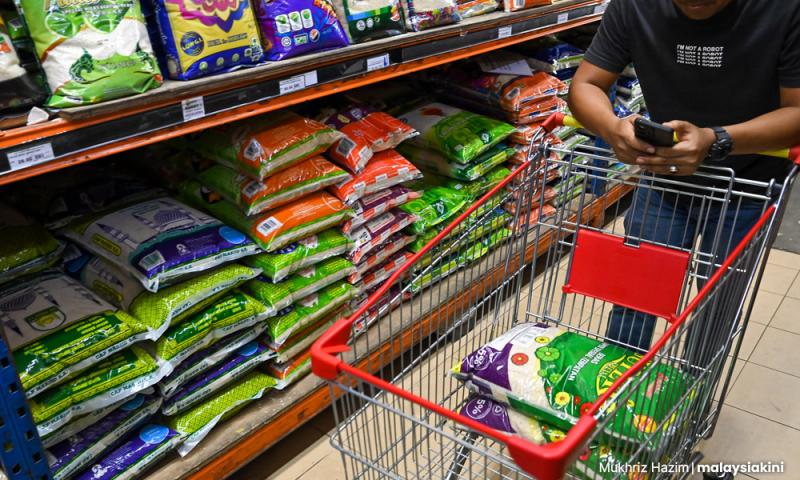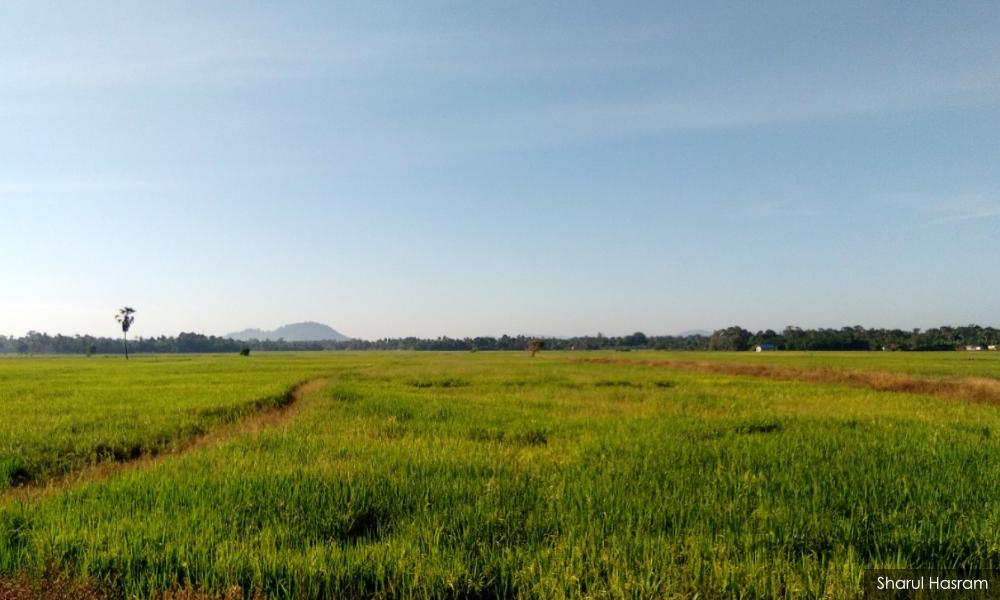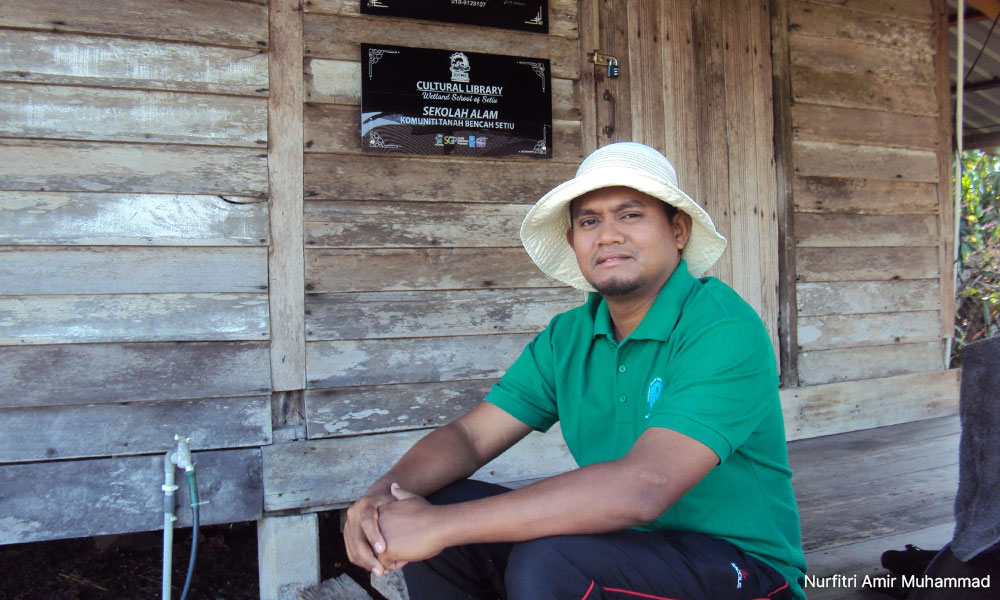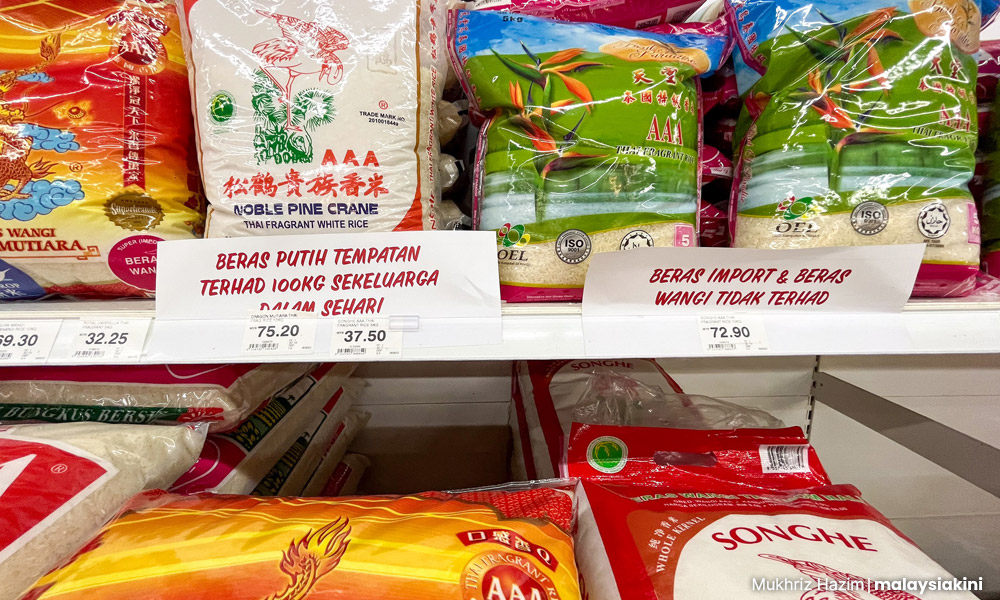
Experts: Climate change, other factors hurting local rice supply
Climate change has inevitably become a major threat to the production of local rice - an issue that continues to persist, said agriculture researchers.
However, they say the unpredictable weather of floods and extreme heat is not the sole factor that is stirring up a storm in Malaysia’s rice bowl states.
Universiti Putra Malaysia Institute of Tropical Agriculture and Food Security fellow consultant Fatimah Mohamed Arshad attributed the current domestic disruption of rice production in the country to El Nino.
Aside from climate change - different patterns of rain and fluctuation of temperature - Fatimah said the heat wave brought on by El Nino has affected the production of rice in the Muda Agricultural Development Authority (Mada) areas.
“It is estimated that production will be reduced by 20 percent.

UPM fellow consultant Fatimah Mohamed Arshad
“And according to some scientists, El Nino (has hit) Asean regions by 100 percent, and its effect on India is about 60 percent.
“Our agriculture will be affected in the next few years, that’s the forecast by the scientists,” she told Malaysiakini.
Supply of local rice - a controlled item which is priced at RM2.60 per kg - has become unstable with consumers complaining that it has become difficult to get.
Observations by Malaysiakini at several supermarkets and hypermarkets in Klang Valley over the past few days revealed that no local rice could be found on shelves.
“And according to some scientists, El Nino (has hit) Asean regions by 100 percent, and its effect on India is about 60 percent.
“Our agriculture will be affected in the next few years, that’s the forecast by the scientists,” she told Malaysiakini.
Supply of local rice - a controlled item which is priced at RM2.60 per kg - has become unstable with consumers complaining that it has become difficult to get.
Observations by Malaysiakini at several supermarkets and hypermarkets in Klang Valley over the past few days revealed that no local rice could be found on shelves.

However, Malaysia is not the only country suffering from the ripple effects of climate change.
India - the world’s largest rice exporter - had imposed a ban on non-basmati rice exports in July after crops were damaged by heavy rains.
According to a report by Reuters, concerns over the potential impact of the El Nino phenomenon - coupled with the ban enforced by India - had led to a roughly 20 percent surge in prices in key exporting countries such as Thailand and Vietnam.
Other countries such as the United Arab Emirates and Myanmar have also suspended rice exports.
Meanwhile, AFP reported that Indonesia had recorded a large increase in rice imports in the first eight months this year compared to the same period last year in a bid to boost stocks of its staple commodity.
Elaborating on the matter, Fatimah also stressed that the soil, which has been heavily chemicalised over the years, does not have enough time to recover for successive planting, in turn, resulting in the low production of local rice.
“The quality of the soil has become low because of the chemicals. The more chemicals put into the soil, the worse it gets, it doesn’t improve it.”

Other contributing factors to the severity of local rice supply, she said, include the limited labour movement across borders caused by post-pandemic as well as the Russia-Ukraine war.
“It all goes to supply and demand.
“The market will correct itself, but that depends on its players. In this case, it’s India. After they have their elections next year, hopefully, things will go back to normal, but it will take some time for things to normalise,” the National Agriculture Advisory Council member said.
Local rice being repackaged as imported
Malaysian Food Security and Sovereignty Forum coordinator Nurfitri Amir Muhammad shared similar sentiments but claimed there was also a different problem affecting the supply of local rice.
He asserted that the global rice prices surged due to the shortage had triggered local wholesalers and retailers to carry out illicit activities of repackaging local rice to be sold at the price of imported rice.
“It’s not that the farmers didn’t supply enough paddy because we can see that the shortage is very severe.
“Because of the shortage (worldwide), the wholesalers buy more local rice but they change the packaging and sell them as imported rice because there’s no price control (on imported rice).
“They can sell them for as high as RM40 or even RM60 per 10kg bag. That’s what’s happening.
“This practice has been done for many years before this but never as rampant as it is now,” he said when contacted by Malaysiakini.

Malaysian Food Security and Sovereignty Forum coordinator Nurfitri Amir Muhammad
Based on his observations, he said up to 70 percent of rice sold at the supermarkets is imported rice.
Nurfitri was referring to Bumiputera Retailers Organisation president Ameer Ali Mydin’s speculations that their efforts to change the packaging of local white rice products and allow manufacturers to promote the products as imported goods.
Ameer was reported by Scoop as questioning whether rice millers might be using unethical tactics to capitalise on the price surge.
It was previously reported that Padiberas Nasional Bhd (Bernas) had raised the selling price of imported white rice nationwide from RM2,350 per tonne to RM3,200 per tonne, effective Sept 1.
In response, Agriculture and Food Security Minister Mohamad Sabu was reported to have issued a stern warning to millers who have carried out such illegal activities.
Mohamad was also reported as saying that relevant agencies were looking into the matter to ensure a sufficient supply of rice.
For now, however, the minister said there is no solid evidence on the rice repackaging claims.
‘Tally the sales records’
Even if the allegations were true, Nurfitri said there’s not much the government can do now that those deliberately wrongly labelled rice are in the market.
Having said that, he said the authorities could still turn things around should they decide to confiscate the sacks of “imported rice” which they suspect to be local rice.
“They can process it back and change the packaging to local rice.
“And also of course, the government should check back on all sales records from wholesalers to the retailers, as in how much local rice was supplied to the retailers and how much local paddy was bought by the factories.
“They can see whether it tallies or not. If it does not tally, it means something has happened,” the researcher and social activist said.
Based on his observations, he said up to 70 percent of rice sold at the supermarkets is imported rice.
Nurfitri was referring to Bumiputera Retailers Organisation president Ameer Ali Mydin’s speculations that their efforts to change the packaging of local white rice products and allow manufacturers to promote the products as imported goods.
Ameer was reported by Scoop as questioning whether rice millers might be using unethical tactics to capitalise on the price surge.
It was previously reported that Padiberas Nasional Bhd (Bernas) had raised the selling price of imported white rice nationwide from RM2,350 per tonne to RM3,200 per tonne, effective Sept 1.
In response, Agriculture and Food Security Minister Mohamad Sabu was reported to have issued a stern warning to millers who have carried out such illegal activities.
Mohamad was also reported as saying that relevant agencies were looking into the matter to ensure a sufficient supply of rice.
For now, however, the minister said there is no solid evidence on the rice repackaging claims.
‘Tally the sales records’
Even if the allegations were true, Nurfitri said there’s not much the government can do now that those deliberately wrongly labelled rice are in the market.
Having said that, he said the authorities could still turn things around should they decide to confiscate the sacks of “imported rice” which they suspect to be local rice.
“They can process it back and change the packaging to local rice.
“And also of course, the government should check back on all sales records from wholesalers to the retailers, as in how much local rice was supplied to the retailers and how much local paddy was bought by the factories.
“They can see whether it tallies or not. If it does not tally, it means something has happened,” the researcher and social activist said.

He also proposed for Putrajaya to look into the pricing mechanism of the controlled price of RM2.60 per kg for local rice which has not been changed since 2008.
“The cost of production has increased every year but the controlled price remained the same. So there’s a very big gap in pricing.
“Irresponsible people would take advantage of this and cheat because they want to gain higher profits.”
No comments:
Post a Comment